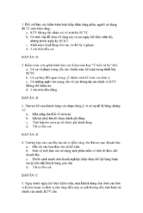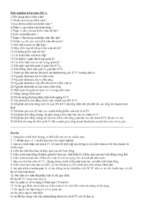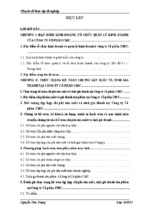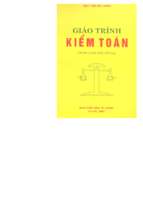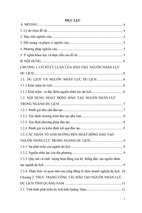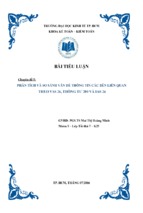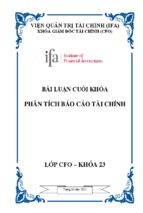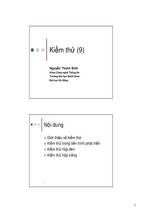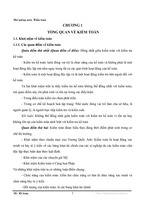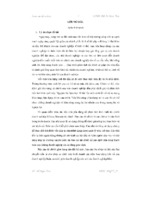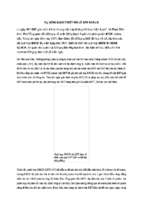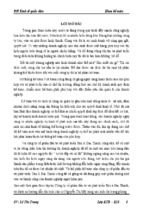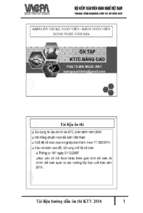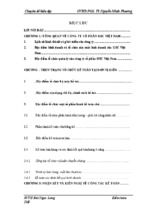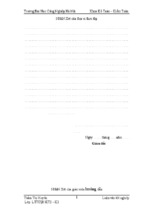Journal of Retailing and Consumer Services 28 (2016) 99–106
Contents lists available at ScienceDirect
Journal of Retailing and Consumer Services
journal homepage: www.elsevier.com/locate/jretconser
Effects of Chinese consumers' relationship benefits and satisfaction on
attitudes toward foreign fashion brands:The moderating role of
country of salesperson
Yu Hua Choi, Ho Jung Choo n
Department of Textiles, Merchandising and Fashion Design, Seoul National University, Seoul, Republic of Korea
art ic l e i nf o
a b s t r a c t
Article history:
Received 13 October 2014
Received in revised form
28 July 2015
Accepted 2 August 2015
The paper examines the various responses of consumers depending on the country of salesperson (COS)
and to look into the effects that consumer–salesperson relationship benefits have on consumer satisfaction and brand attitude. The results suggest that consumers' perceived social benefit and functional
benefit positively influenced their satisfaction with salesperson, and a significant positive effect of
consumers' satisfaction with salesperson on consumers' brand attitude is found. This positive relationship was moderated by COS. These findings suggest that COS will serve as an important retail mix for
global marketers. Other results and management implications are also discussed.
& 2015 Elsevier Ltd. All rights reserved.
Keywords:
Country of salesperson(COS)
Relationship benefit
Satisfaction with salesperson
Brand attitude
1. Introduction
China's economy has experienced vigorous growth which has
led to ever-increasing disposable income levels, thereby resulting
in higher consumption of fashion products by Chinese consumers.
China's fashion market is growing in both quantity and quality
owing to the expansion of global fashion brands and the improved
competitiveness of Chinese local brands. Many foreign fashion
brands are entering China's fashion market. Global foreign fashion
brands targeting the apparel market in China should find a niche
market and strengthen their competitiveness by establishing a
differentiated strategy.
Firms tend to build a strong relationship with customers as a
means to obtaining a competitive advantage (McKenna, 1991).
Maintaining customer relationship is an important method of
earning profit under intense competition. Among various approaches for competitiveness, customer-oriented relationship
marketing is attracting the most attention. Relationship marketing
focuses on forming and maintaining a long-term relationship between companies and customers. Personal selling is essential in
providing goods and services to the end-consumer and managing
customer relationships (Solomon, 2009). From the company's
point of view, service provided by personal selling is a major factor
that differentiates it from its competitors. In personal selling, there
is face-to-face mutual communication with the customer.
n
Corresponding author.
E-mail address:
[email protected] (H.J. Choo).
http://dx.doi.org/10.1016/j.jretconser.2015.08.003
0969-6989/& 2015 Elsevier Ltd. All rights reserved.
Therefore, the salesperson's communication skills and knowledge
of the product is the major determinant of customers' understanding of the product and resulting satisfaction (Cho and Ku,
2002; Weitz and Bradford, 1999). In Korea, where Chinese tourists
contribute great sales volume for fashionable goods, many department stores employ Chinese salespeople to serve Chinese
visitors as a better way of communicating with customers (Chinese Tourists Around the World, 2014). However, despite its convenience, this can provide an unsatisfactory experience for customers who are seeking foreignness. This paradox can be explained through the concept of perception of relationship benefit:
Chinese customers might prefer Chinese salespeople when they
pursue functional benefits, such as convenience, but prefer Korean
salespeople when pursuing social benefits, such as foreignness.
Previous studies related to salespeople focused on the salesperson's performance (Johlke and Iyer, 2013; Lam, 2012; Mariadoss et al., 2014; Valenzuela et al., 2014) and job satisfaction
(Chang et al., 2006; Macintosh and Krush, 2014; Rast and Tourani,
2012). These studies mainly deal with financial products such as
insurance, banking, or the service industry such as hotels and
airlines. Furthermore, there is no previous research on the role of
the salesperson's nationality. Considering the great importance of
the salesperson in the clothing industry, there are limited relevant
studies. Due to rapid globalization, fashion companies now face
competition from diverse foreign products in the world market.
The country of origin effect, defined as positive or negative effects
that information about the manufacturing country has on consumers' evaluation and purchase of a given product (Elliott and
100
Y.H. Choi, H.J. Choo / Journal of Retailing and Consumer Services 28 (2016) 99–106
Cameron, 1994), has been a popular research topic. Because a
single product is often designed, developed, and manufactured in
different countries, factors such as country of design and country
of manufacture are also being discussed. In this context, this paper
aims to study the country of salesperson (COS) as another important variable.
In addition, there are few studies on relationship benefits,
especially in the fashion sector. Therefore, it would be meaningful
to find out how relationship benefits in foreign brand stores affect
consumer satisfaction and brand attitude in light of the salesperson's nationality, and whether the method of providing relationship benefits is appropriate for improving brand attitude.
This study aims to examine the various responses of consumers
regarding the COS, and to observe and discuss the effects that
consumer–salesperson relationship benefits have on consumer
satisfaction and brand attitude. Fashion retail salespeople create
the impression of clothing firms and fashion stores and at the
same time play various roles, including making fashion-related
suggestions to customers. This study will reveal the effect that COS
has on this process. The results will also be useful for fashion retail
firms in establishing effective salesperson management strategies.
2. Literature review and hypotheses
2.1. Relationship benefits
Gwinner et al. (1998) claimed that the relationship benefit is a
consumer benefit from a long-term relationship and acts as an
incentive for firms to maintain such relationships with consumers.
The relationship benefit is also known as a benefit that companies
and employees provide in order to maintain interaction with,
encourage loyalty from, and retain the number of customers
(Reynolds and Beatty, 1999). Beatty et al. (1996) argued that along
with relationships with family members or friends, relationships
with service providers also provide benefits that satisfy critical
needs. Furthermore, the social and functional needs of customers
contribute to the formation of relationships between salesperson
and customer, and the salesperson's repetitive interaction with the
customer based on confidence, friendship, and functionality induce the customer's loyalty toward the company and salesperson.
According to Darden and Dorsch (1990), consumers gain benefits
such as information about products and social interaction. In other
words, the relationship with salespeople provides the benefit of
fulfilling consumers' important desires.
In a previous study, Choi (2003) asserted that the relationship
benefit affects the satisfaction of employees in the water purifier
industry. Lee et al. (2002) conducted a study on the effect of relationship benefits on consumer satisfaction with and loyalty to
hotel employees and restaurants. Literature relating to the fashion
industry reports similar findings. Beatty et al. (1996) studied the
relationship between the department store salesperson and customer, and classified the benefits that customers desire as functional and social benefits. Functional benefits are related to time
saving, convenience, advice on fashion, and making a better purchase. Social benefits include the pleasure of a close relationship
with the salesperson, having a good friend, and having a good
time. Social benefits had a positive effect on satisfaction with the
salesperson and loyalty, but functional benefits had a positive effect only on satisfaction with the salesperson. Regarding such satisfaction, functional benefits had a more significant effect than
social benefits. Reynolds and Beatty (1999) also classified relationship benefits into functional and social relationships, and
found that the relationships had a positive effect on satisfaction
with the salesperson. Such positive satisfaction seems to have a
positive effect on purchase intent. Patterson and Smith (2001)
studied cases in the United States and Thailand, and obtained
empirical results that proved that relationship benefits increase
repurchase intention. Kim and Rhee (2005) also found that the
higher the perceived relationship benefits of fashion product
consumers, the more positive their attitude.
In line with these studies, this study also classifies relationship
benefits into functional and social benefits, and analyzes the effect
that such benefits have on salesperson satisfaction. Therefore, we
hypothesize
H1. The perception of relationship benefits has a positive effect on
satisfaction with the salesperson.
H1a. Functional benefit has a positive effect on satisfaction with the
salesperson.
H1b. Social benefit has a positive effect on satisfaction with the
salesperson.
H1c. Functional benefit and social benefit have a positive effect on
satisfaction with the salesperson.
2.2. Satisfaction with the salesperson
The main concept of marketing is satisfaction, which is “a
psychological state when the expectation meet the consumers'
feeling of their consumption experience” (Oliver, 1980). Fornell
et al. (1996) conceptualized customer satisfaction as dependent on
how closely the perceived quality and effectiveness of the product
match up with consumers' expectations. Above all, consumers
experience satisfaction through the overall experience with the
store and the salesperson (Chang et al., 2006). Vincent et al. (2006)
pointed out that an inappropriate service manner is the main
trigger of shopping stress. This is why the salesperson who directly
contacts the consumer is the most important factor when it comes
to consumer satisfaction (Crosby et al., 1990).
Oliver (1980) hypothesized that customer satisfaction affects
the attitude of the customer, and the influence of this attitude
continuously affects repetitive purchase behavior. Oliver (1980)
proved this hypothesis through experiments revealing that consumer satisfaction has a positive influence on attitude, which increases consumers' purchase intention and loyalty. Poujol et al.
(2013) observed that satisfaction toward the salesperson has a
positive influence on anticipation of future interactions and loyalty
toward the firm. Chen (2012) found that the higher the satisfaction, the more positive the consumer's attitude and, subsequently,
the higher the consumer's loyalty. Choi (2003) showed that satisfaction with the salesperson has a positive impact on company
satisfaction. Kim (2005) found that in the hotel industry, beneficial
relationships indirectly impacted the degree of loyalty by forming
positive attitudes and switching cost.
The importance of the consumer's satisfaction with the salesperson on attitude and behavior was also confirmed in the fashion
shopping context. Reynolds and Beatty (1999) found that satisfaction with the salesperson had a static relationship with
company satisfaction, word of mouth, and the overall purchase of
clothing. According to Beatty et al. (1996), the more satisfied
consumers felt about the department salespeople, the more their
satisfaction with the company increased, which also results in
positive word of mouth and purchase intention. The higher the
satisfaction with fashion clothing store salespeople, the higher the
consumer's satisfaction, and this also has a positive effect on store
loyalty (Cho and Ku, 2002).
Many of the aforementioned studies have given insights about
the salesperson's satisfaction difference in building attitudes toward brands. Michell and Olson (1981) define brand attitudes as
consumers' overall evaluation of a brand, and anything linked in
Y.H. Choi, H.J. Choo / Journal of Retailing and Consumer Services 28 (2016) 99–106
memory to a brand. Semantic differential scales measuring brand
attitudes have frequently appeared in marketing literature (Low
et al., 2000), typically as the dependent variable in research on
product or advertising affects. Consumer attitudes toward brands
capture another aspect of the meaning consumers attach to brands
in memory, which affects their purchase behavior.
In this study, we will examine the overall process of how the
consumers' perception of relationship benefits influences foreign
brand attitude by satisfaction with the salesperson as the mediator. Therefore, we hypothesize
H2. Satisfaction with the salesperson has a positive effect on brand
attitude.
H3a. The perception of relationship benefits has a positive effect on
brand attitude.
H3b. Functional benefit has a positive effect on brand attitude.
2.3. Salesperson's effect
The salesperson is the most important factor in promoting the
customer's purchase. Whether consumers' attraction to a certain
product leads to purchase or not depends on how well the salesperson explains the benefits of the product (Cho and Ku, 2002;
Mariadoss et al., 2014). In addition, consumers associate the impression of the salesperson with the impression of the store or
product. A good impression of the salesperson can form a positive
image of the product and store, which subsequently induces the
consumer's purchase (Na, 2010; Gulmira, 2004).
Most of the exchanging relations cannot be explained purely in
economic terms due to the fact that personal sales involve face-toface contact between the salesperson and the customer (Tam and
Wong, 2001). According to Darden and Dorsch (1990), a customer–
salesperson relationship arises when there is a series of interactions between them. In such bilateral relations, similarities shared
between the two parties catalyze the generation of trust (Kanter,
1993). Hence, a study of a salesperson's role needs to differentiate
between similarity of the salesperson and the brand and similarity
of the salesperson and the customer.
In his study of professionals and housewives, Gulmira (2004)
found that the more similar the salesperson and brand image, the
higher the consumer's inclination to purchase. He also confirmed
that the salesperson's impression had a bigger effect on purchase
than the details of the product. Na (2010) found that brand identification and personal identification had a positive effect on
consumer preference. This implies that consumers will have a
more positive attitude if there is a stronger association between
the salesperson, who represents the brand image, and the brand
itself. Hulland (1999) uses the term country of brand (COB) to refer
to the nationality of the company that owns the brand, and shows
that the brand name itself plays a critical role in consumers' decision-making. As a result, we expect that the similarity of COS and
COB will lead to a more positive consumer reception.
However, some studies report that customers' positive attitudes are related to the strength of similarities between the
salesperson and the customers themselves. According to Crosby
et al. (1990), when the appearance, lifestyle and socio-economic
status of the salesperson is similar to the customer's conditions,
the sales effectiveness increases. Customers tend to show more
trust in shop managers that appear more similar to themselves,
and while they also valued the salesperson's sense of fashion, they
placed greater value on a personal and comfortable relationship
(Ahn, 2001). Furthermore, Pinkaeo and Speece (2002) investigated
expectations of service quality toward life insurance across service
brand origin, design origin, and nationality of service provider (i.e.,
sales representatives). This study showed that generally, consumer
101
expectations were significantly affected by brand origin, nationality of sales reps, and service familiarity, and Thai sales reps had
the highest consumer expectations, followed by US and Indian
sales reps, respectively. The intention to buy is significantly greater
when the sales presentation is made by a salesperson from the
target country rather than by a salesperson from the product
country of origin (McGee and Spiro, 1991). This concluded that a
salesperson who is a native of the target country is preferred over
one from the product country of origin. Our study has showed that
consumers prefer a local salesperson to one who shares the
brand's nationality. This implies that consumers are more likely to
purchase the product when the COS and the country of customer
(COC) coincide.
Many previous studies have evaluated the salesperson's effect
on consumer response in relation to the product brand, but studies
that considered the COS are nonexistent. However, this is an important issue, and should be addressed as an important variable in
the relationship between salesperson and brand. The present
study predicts that the COS of Korean fashion brands targeting
consumers in China will affect sales.
With these previous studies in mind, salesperson–brand and
salesperson–customer similarities in terms of nationality can be
expected to show the following relation: when COS and COB are
the same, the brand image will be strengthened, appear more
exotic, and lead to social benefits associated with foreignness
(Reynolds and Beatty, 1999). On the other hand, when COS and
COC are the same, information will be delivered more efficiently,
the customer will feel more comfortable, and there will be functional benefits associated with convenience (Reynolds and Beatty,
1999). Therefore, we hypothesize
H4. The country of salesperson (COS) moderates the positive relationships among relationship benefits, satisfaction with the salesperson, and brand attitude.
3. Methods
3.1. Data collection
This research aims to study the responses of Chinese consumers toward Korean fashion brands. The main research purposes are to find out (1) whether relationship benefits affect satisfaction with the salesperson and brand attitude, and (2) whether the COS affects this kind of process. According to the hypothesis development, the research model is summarized in Fig. 1.
In order to test the proposed hypotheses, an on-line survey was
conducted with Chinese people who live in China. Once he or she
agreed to participate to the study, the participant was asked to
select the preferred nationality of the salesperson with whom they
want to interact at a Korean fashion store. The on-line survey with
scenarios was conducted over the course of one month (January
2014) within all regions of China. A total of 300 respondents were
chosen for analysis, of whom 150 selected a Chinese salesperson
and 150 selected a Korean. These data were collected from an online survey tool (http://snu.az1.quatrics.com), which is the industry-leading provider of online survey software. The data for
this study were analyzed using SPSS 18.0 and AMOS 18.0.
3.2. Measures
The following scenarios were presented in advance to taking
the survey. “Imagine that you visited a famous Korean fashion
brand shop to buy fashion items.” An imaginary Korean fashion
brand name was used to control for brand effect because using an
actual brand name may have triggered memories of personal
102
Y.H. Choi, H.J. Choo / Journal of Retailing and Consumer Services 28 (2016) 99–106
Functional
Benefits
H3a
H1a
Satisfaction
with the
Salesperson
H4 COS
H1b
H2
Brand Attitude
H3b
Social
Benefits
Fig. 1. The proposed research model.
experiences, perceptions, or attitudes toward the actual brand,
which could affect the research results. The survey respondents
were asked to assume that they were visiting a Korean fashion
brand shop and choose either “I wish most of the salespersons
were Chinese” or “I wish most of the salespersons were Korean.”
In performing this research, the principle was to use measurement items that were used in previous studies which have
proven reliability and validity. According to the selection of Chinese salesperson or Korean salesperson, there are two kinds of
survey processes with the same variables. Thus, this study changed several wordings to accommodate the preferred type of
salesperson, such as “I benefit from the convenience that my
Chinese salesperson provides me” and “I benefit from the convenience that my Korean salesperson provides me” in the functional benefits variable.
To measure the relationship benefits the Chinese consumers
perceived, four functional benefit questions and four social benefit
questions were adopted from the study of Reynolds and Beatty
(1999). Four questions measuring satisfaction with the salesperson
were adapted from Ganesan's (1994) study. Brand attitude was
measured by the degree of emotional attitude consumers felt
using items developed by Low et al. (2000), including “good,”
“pleasant,” “beneficial,” and “valuable.” All the items were measured on a five-point Likert scale.
The respondents who chose a Chinese salesperson took the
survey constructed with questions concerning relationship benefits and satisfaction with Chinese salespeople in Korean fashion
brand shops, while respondents who chose a Korean salesperson
took the survey constructed with questions concerning relationship benefits and satisfaction with Korean salespeople in Korean
fashion brand shops. The role of the COS can be examined by
comparing those two processes.
4. Results
Regarding sex, 111 were men (37%) and 189 were women (63%). In
terms of education level and marital status, 229 (76.3%) replied
that they graduated from college or had a higher level of education, while 197 (65.7%) were unmarried. A vast majority (83%) had
a monthly income of less than RMB 2000. Place of residence was
relatively evenly distributed in the descending order of East China
(25.7%), North China (20.3%), Central China (15.3%), South China
(13.0%), and Southwest China (10.3%).
The degree of familiarity with Korea was assessed using the
following criteria: frequency of Korean fashion item purchase,
Korean language ability, and the number of visits to Korea. It was
revealed that 25.7% of respondents bought Korean fashion products often, while 33.3% did so rarely. It was also found that 10.3%
were able to produce greetings in Korean, but the majority could
not speak any Korean. Further, 9.7% had visited Korea a few times,
but the majority (57.0%) had never been to Korea.
As the central theme of this paper is the difference according to
the COS, a t-test was carried out to determine whether there were
any discrepancies in the prescribed sample characteristics between the group that chose Chinese salespersons and the group
that chose Korean salespersons. The results are seen in Table 1.
One of the significant differences was in monthly income of the
two groups (t¼–2.06, p ¼.040). Specifically, the group that chose a
Korean salesperson had a higher average income than the other
group. There were no significant differences with regard to other
demographic characteristics.
Meanwhile, the t-test was also used to identify differences between the two groups with regard to familiarity with Korea (see Table 1). In all three criteria (frequency of Korean fashion item purchase,
Korean language ability, and the number of visits to Korea), the group
that preferred Korean salespersons had a significantly higher value,
indicating a significant difference between the two groups. In other
words, the more frequently consumers purchase a Korean fashion
item, the more Korean they know, and the more visits they made to
Korea, the more likely they are to prefer Korean salespersons. Consumer psychology favors Korean salespersons when consumers know
more about and have a stronger connection to Korea.
Lastly, an additional analysis was carried out on discrepancies
between the two groups with regard to the latent variables used in
the study (see Table 1). The group that chose Chinese salespersons
has a significantly higher functional benefit (t¼8.27, p¼ .000), while
on the other hand the group that chose Korean salespersons had a
significantly higher social benefit (t¼–4.83, p¼.000). Satisfaction
with the salesperson did not show a significant difference (t¼–.559,
p¼.576), but in brand attitude, those who favored Korean salespersons were significantly higher than those who favored the Chinese salespersons (t¼–2.54, p¼.011).
4.1. Sample characteristics
4.2. Measurement model evaluation
Responses from a total of 300 respondents were analyzed. The
demographic characteristics are as follows. Respondents in their
twenties are the largest group with 211 members (70.3%).
A confirmatory factor analysis was carried out to test the reliability and validity of variables measured in this study (see
Table 1
T-test results for differences in sample characteristics according to COS preferences.
Group
Chinese salesperson
(n¼ 150)
Korean salesperson
(n¼ 150)
t-value
nnn
p<.001.
p<.01.
p<.05.
nn
n
Mean
S.D.
Mean
S.D.
Income Frequency of Korean fashion
item purchase
Korean language
ability
Number of visits to Functional
Korea
benefit
Social
benefit
Brand
attitude
2.22
1.26
2.53
1.36
-2.06n
2.01
.98
2.66
1.41
-4.63nnn
1.49
.92
2.20
1.45
-5.02nnn
3.38
.73
3.79
.73
-4.83nnn
3.65
.63
3.82
.54
-2.54n
3.54
1.12
3.90
1.04
-2.86nn
4.21
.52
3.60
.73
8.27nnn
Y.H. Choi, H.J. Choo / Journal of Retailing and Consumer Services 28 (2016) 99–106
103
Table 2
Confirmatory factor analysis for measurement model.
Standard loading (λ) Cronbach's α AVE
Dimensions
Items
Functional benefit
I benefit from the convenience that my Chinese (Korean) salesperson provides me. .704
I benefit from the time saving that my Chinese (Korean) salesperson provides me.
I benefit from the advice that my Chinese (Korean) salesperson gives me.
I make better purchase decisions because of my Chinese (Korean) salesperson.
Social benefit
I feel a good friendly relationship with my Chinese (Korean) salesperson.
I enjoy spending time with my Chinese (Korean) salesperson.
I feel a close, personal relationship with my Chinese (Korean) salesperson.
I enjoy my Chinese (Korean) salesperson's brand.
Satisfaction with the
salesperson
I'm pleased with the Chinese (Korean) salesperson.
I'm happy with the Chinese (Korean) salesperson.
I'm content with the Chinese (Korean) salesperson.
I enjoyed myself with the Chinese (Korean) salesperson.
Brand attitude
I perceive this brand as a good brand.
I feel pleasant about this brand.
I get benefit from this brand.
I think this brand is a good value for the money.
CR
.837
.574
.928
(.788)
.774
(.720)
.816
(.834)
.732
(.775)
(.861)
(.608) (.898)
.764
(.808)
.852
(.799)
.836
(.768)
.816
(.766)
.887
(.865)
.668
(.616)
.755
(.752)
.815
(.820)
.84
(.729)
.832
(.791)
.884
(.835)
.658
.933
(.598) (.899)
.824
(.794)
.831
(.780)
.754
(.710)
.774
(.782)
.873
(.784)
.634
.925
(.588) (.911)
.917
(.894)
Notes: parentheses for Korean salesperson results
Chinese, GFI ¼.888, AGFI¼ .844, CFI ¼ .954, RMR¼ .030, RMSEA ¼.064, X2 ¼ 158.050 (df ¼ 98, p ¼0.000), Normed X2 ¼ 1.613
Korean, GFI¼ .882, AGFI ¼ .836, CFI¼ .946, RMR¼ .031, RMSEA ¼ .065, X2 ¼ 159.642 (df ¼98, p ¼ 0.000), Normed X2 ¼ 1.629
Table 2). The measurement model for the subsample who chose a
Chinese salesperson was found to have goodness of fit values of
GFI¼ .888, AGFI¼ .844, CFI¼ .954, RMR¼ .030, RMSEA ¼.064,
X2 ¼158.050 (df ¼98, p ¼0.000), Normed X2 ¼ 1.613, indicating a
sufficient level of acceptance. To test the convergence validity of
the measurement model, significance level of average variance
extracted (AVE), composite reliability (CR), and factor loading were
examined. Factor loadings of all measured variables were significant at the 1% significance level, and both AVE and CR values
were high at .574–.668 and.917–.933, respectively. Cronbach's α for
variables was examined to test reliability, and a high internal
consistency of range .837–.887 was confirmed. Moreover, as presented in Table 3, for each pair of latent variables, the AVE value for
each variable and the square of the correlation coefficients between the two variables were compared to test for discriminant
validity, and for each pair, the square of the correlation coefficient
was lower than the AVE values, satisfying conditions for discriminant validity (Formell and Larcker, 1981).
Within the brackets of Table 2 are the results for the confirmatory factor analysis on the subset that chose a Korean salesperson. Goodness of fit coefficient of the measurement model was
at GFI¼.882, AGFI ¼.836, CFI¼.946, RMR¼ .031, RMSEA ¼ .065,
X2 ¼159.686 (df ¼98, p¼ 0.000), Normed X2 ¼1.629, indicating a
sufficient level of acceptance. Again, the convergent validity of the
measurement model was tested by examining the significance
levels of AVE, CR, and factor loading. For all measured variables,
Table 3
Average variance extracted and square of correlation coefficient for variables.
Functional benefit
Social benefit
Satisfaction with
the salesperson
Brand attitude
Functional
benefit
Social
benefit
Satisfaction with
salesperson
Brand
attitude
.650a
(.608a)
.129b
(.458b)
.317b
(.485b)
.103b
(.191b)
.651a
(.616a)
.445b
(.482b)
.318b
(.506b)
.607a
(.598a)
.428b
(.551b)
.571a
(.588a)
Notes: Parentheses for Korean salesperson results.
Chinese salesperson (Korean salesperson),
a
b
AVE of each variable.
Square of correlation coefficient between latent variables.
factor loading was significant at the 1% significance level, and AVE
and CR were high at .588–.616 and .894–.911, respectively. For
reliability assessment, Cronbach's α for the variables was examined, and a high internal consistency was confirmed with the
range of .784–.865. Furthermore, as presented in Table 3, for each
pair of latent variables, the AVE value for each variable and the
square of the correlation coefficients between the two variables
were compared to test for discriminant validity, and for each pair,
the square of correlation coefficient was lower than AVE values,
104
Y.H. Choi, H.J. Choo / Journal of Retailing and Consumer Services 28 (2016) 99–106
satisfying conditions for discriminant validity (Formell and Larcker, 1981).
4.3. Testing of differences according to COS preference
4.3.1. Invariance test of the measurement model
Prior to analyzing differences according to COS preference, a
multi-group confirmatory factor analysis was carried out as a
measurement invariance test in order to confirm invariance of
variables included in the measurement model (Steenkamp and
Baumgartner, 1998). First, a configural invariance test was carried
out to confirm whether the measurement frameworks for the two
groups are identical. For the suggested measurement model, the
chi-square value was significantly high (X2 ¼ 317.735, df¼ 196,
p<.001), but other indices showed a very high goodness-of-fit
(Normed X2 ¼1.621, CFI¼ .950, RMSEA ¼ .046), and the measurement items for latent variables were found to have a factor loading
of over .7, indicating a statistically significant level of configural
invariance.
For the measurement equivalence test, the restricted model for
factor loading metrics of the two groups was compared to the nonrestricted model. The results (see Table 4) show that the increase
in chi-square value was not statistically significant (ΔX2 ¼ 16.638,
df¼ 12, p ¼.164), confirming a perfect equivalence in measurement
(Steenkamp and Baumgartner, 1998; Yi & La, 2004). As the two
groups of differing nationality preference were confirmed to be
equivalent in measurement for all latent variables in the model, all
later model analyses were carried out as a full measurement invariance model.
4.3.2. Test of path coefficient disparity
A structural equation model analysis with multiple group
modeling was carried out to test the research hypothesis. An
analysis based on a full model invariance model was carried out to
investigate the disparity of path coefficient between the group that
preferred Korean salespersons and the group that preferred Chinese salespersons. The chi-square value was significantly high
(X2 ¼ 334.373, df ¼208, p<0.001), but for all other indices the two
groups had high goodness-of-fit (Normed X2 ¼1.608, CFI ¼.948,
GFI¼ .880, RMR¼.036, RMSEA ¼.045), confirming that the suggested model and information were suitable. In Fig. 2, results of
overall hypotheses tests are summarized on the original research
model.
As shown in Fig. 2, for the group that chose Korean salespersons, all paths that mediate salesperson satisfaction were significant. On the other hand, for the group that preferred Chinese
salespersons, the path from social benefits to satisfaction was insignificant. The results support H1 and H2, but H1b was rejected
only in the group that chose Chinese salespersons. Furthermore, in
both groups, the effects of both functional and social benefits on
brand attitude were not significant, indicating that satisfaction
with the salesperson acts as a full mediation variable. Therefore,
the results reject H3a and H3b.
To test hypothesis H4, disparities between the two groups were
examined. First, the equivalency of path coefficients that correspond to each other in the models for the two groups had to be
examined. A non-restricted model was constructed in which none
of the path coefficients were restricted. This would be the
Table 4
Comparison of measurement model as non-restricted model and restricted model.
Non-restricted model
Full metric invariance
X2
df
RMSEA
AIC
CFI
317.735
334.373
196
208
.046
.045
469.735
462.373
.950
.948
reference model. A series of non-restricted models were set up
with each of the corresponding paths restricted. Chi-square values
between the non-restricted reference model and the other models
were calculated, and a significant disparity was observed in all
cases. A summary of results can be seen in Table 5. The results
support H4.
In both groups, functional benefit has a significant positive
impact, and statistical results point out that there is a significant
disparity between the two groups (ΔX2 ¼5.772, Δdf¼ 1, p ¼.016). In
the group that chose Chinese salespersons, the path coefficient
between functional benefit and satisfaction with the salesperson
was very high at .380, but the group with Korean salespersons had
a relatively low path coefficient of .161. The effect of functional
benefit on salesperson satisfaction was significantly greater for the
group that preferred a Chinese salesperson to a Korean
salesperson.
The group preferring Chinese salespersons showed no direct
relationship between social benefit and satisfaction with the
salesperson. On the other hand, the group preferring Korean
salespersons showed a significant direct effect (ΔX2 ¼29.346,
Δdf¼1, p ¼.000), displaying yet another significant disparity between the two groups.
In both groups, satisfaction with the salesperson had a significant effect on brand attitude, and there was a significant difference of economic level between the path coefficients of the two
groups (ΔX2 ¼ 3.796, Δdf¼ 1, p ¼.051). The path coefficient between satisfaction with the salesperson and the brand attitude
was found to be higher in the group that preferred Chinese
salespersons (β¼ .676, p¼ .000) than in the group that preferred
Korean salespersons (β¼ .430, p ¼.016). In other words, satisfaction
with the salesperson affects brand attitude more greatly for consumers that prefer Chinese salespersons.
Meanwhile, the correlation between functional and social
benefits also showed a disparity between the two groups
(ΔX2 ¼5.623, Δdf¼1, p ¼.018). The group that preferred Korean
salespersons had a higher path coefficient (β¼.455, p ¼.000) than
the group that chose Chinese salespersons (β¼.227, p ¼.020), exemplifying a closer relationship between the two benefits in this
group.
5. General discussion
This paper examined the consumers' relationship benefits and
their effects on satisfaction with the salesperson and foreign brand
attitude in order to assess the impact of differing COS hired by a
foreign brand. An online survey of China-resident consumers was
carried out. Considering specific relationship dynamics between a
salesperson and a consumer, differentiated factors were derived,
and influencing relationships among the variables were analyzed.
First, functional and social benefits impact positively on satisfaction with the salesperson, and satisfaction with the salesperson positively impacts brand attitude in turn. Generally, as
consumers recognize more relational benefits with the salesperson, their satisfaction with the salesperson gets higher, leading
to an overall high positive brand attitude. This is in line with the
observations already made by previous research (see Kim and
Rhee, 2005; Reynolds and Beatty, 1999) that investigated the impact of the relationship benefits between a customer and a
salesperson on satisfaction with the salesperson and consumption.
These results prove once again that establishing relations with
customers via salespersons is very useful in gaining competitive
advantage (see McKenna, 1991; Weitz and Bradford, 1999). In addition, there was a positive relationship between functional and
social benefits, and this exemplifies a high correlation between
two sub-dimensions of relational benefits as perceived by
Y.H. Choi, H.J. Choo / Journal of Retailing and Consumer Services 28 (2016) 99–106
X1
X2
X3
X4
Functional
Benefits
.380***
Y1
Y2
Y3
Y4
.161*
.455***
105
Satisfaction
with the
Salesperson
.227*
Y5
.676***
Y6
Y7
Y8
Brand
Attitude
.430***
.710***
Social
Benefits
Chinese salesperson
Korean salesperson
X5
X6
X7
X8
Notes: X 2 = 334.373 (df = 208, p < .001), Normed X 2 = 1.608, GFI = .880, CFI = .948, RMR = .036, RMSEA = .045; ***p < .001, *p < .05
Fig. 2. Test of the structural model comparison across the groups.
Table 5
The group comparisons of path coefficients.
βa
Chinese (n¼ 150)
Korean (n ¼150)
X2
Df
ΔX2
Δdf
p
Reference model
Measurement weights
−
−
334.373
208
−
−
−
Restricted model (restricted path)
Functional Benefits→satisfaction with the salesperson
Social benefits→satisfaction with the salesperson
Satisfaction with the salesperson→brand attitude
Functional benefits↔social benefits
.380nnn
.035
.676nnn
.227n
.161n
.710nnn
.430nnn
.455nnn
340.145
363.719
338.169
339.997
209
209
209
209
5.772
29.346
3.796
5.623
1
1
1
1
.016
.000
.051
.018
Notes:
a
The standardized regression coefficient in the reference model;
nnn
p o .001, np o .05.
consumers (see Reynolds and Beatty, 1999).
Second, the paper examined the difference in path coefficient
analyses according to the COS. In the path connecting functional
benefits to satisfaction with the salesperson, the subset who preferred Chinese salespersons had a higher path coefficient than those
who preferred Korean salespersons. This is related to the argument
that not only is the specialized knowledge of a salesperson helpful in
facilitating successful sales through efficient communication about
the product and the market, but in fact it also is the most important
factor determining consumer satisfaction (see Mariadoss et al.,
2014). These results are consistent with data reported in Pinkaeo
and Speece (2002), which revealed that if the quality of service requires high information transfer, consumers may believe that a native speaker can do it better. As most Chinese respondents are not
fluent in Korean, they would prefer Chinese salespersons for accurate delivery of information, and this leads to a higher satisfaction
among the subset of those who prefer Chinese salespersons. This is
in line with the result of McGee and Spiro (1991), who concluded in
favor of local salespersons from the target country.
In the subset that chose a Chinese salesperson, the path from
social benefits to the salesperson satisfaction was not significant at
all. This indicates that in the case of Chinese consumers that prefer
Chinese salespersons, social benefit, no matter how high it may be,
will not improve salesperson satisfaction. This can be explained by
the other analysis from this paper. The t-test result points out the
consumers that chose a Chinese salesperson have a relative tendency to seek functional benefits, while those that chose a Korean
salesperson tend to pursue social benefits. This implication is in
contrast to McGee and Spiro's (1991) relatively simplistic conclusion that consumers prefer local salespersons of the same nationality as the store location, rather than salespersons of the same
nationality as the brand's country of origin.
Third, the group that selected Korean salespersons had a
relatively higher household income, suggesting that consumers
with higher income prefer Korean salespersons. This is similar to
the finding of Boyle (2000) that income level contributes greatly to
customer characteristics and receptiveness to a firm's marketing
endeavors. In addition, comparison of familiarity to Korea and
Korean products shows that this group bought Korean garments
more frequently, spoke better Korean, and visited Korea more often than the group that chose Chinese salespersons. Such a conclusion resembles that of Lohtia et al. (2005), that states that
American sellers that are more knowledgeable about Japan and
more sensitive to Japanese culture will gain more trust from Japanese buyers and establish better exchanging relationships.
5.1. Implications
This research added to our theoretical understanding of the relational benefits perceived by consumers that act as a positive factor
and lead to differentiated preferences in the COS. This conclusion
has important implications for these areas of literature. Based on our
review of extant literature, this is the first known attempt to theoretically and empirically investigate the role of COS in the foreign
brand attitude. As theorized, our results support the expectation that
satisfaction with the salesperson plays a critical role in translating
relationship benefits into value for brand attitude.
The managerial implications of the theoretical assertions and
empirical findings are multifold. This conclusion could act as a
useful parameter for market segmentation strategy. It would be of
particular interest to firms that use the COS as a useful marketing
strategy and serve to provide crucial information. More detailed
implications and suggestions are as follows.
First, regardless of the preference for Chinese or Korean nationality, functional benefit had a positive impact on salesperson
satisfaction and brand attitude. Hence, brands or firms that aim to
106
Y.H. Choi, H.J. Choo / Journal of Retailing and Consumer Services 28 (2016) 99–106
attract consumers seeking functional benefits may employ salespersons of either nationality. However, the group that preferred
Chinese salespersons has a higher receptivity to relational benefits
affecting salesperson satisfaction and a higher functional benefit
overall. This could imply that consumers who value functional
benefits and related conveniences prefer to deal with Chinese
salespersons. Hence, in the clothing industry, outdoor and functional clothing brands may find it more effective to employ more
Chinese salespersons.
Second, the group that preferred Korean salespersons displayed
relatively greater social benefit in the analysis. As higher social
benefit improves salesperson satisfaction and brand attitude,
brands and firms targeting consumers that pursue social benefit
should align the nationality of the brand and the salesperson.
Fashion consumers that opt for social benefits and related exotic
and mystical components would prefer Korean salespersons, so
fashion brands with a more hedonic tendency should consider
hiring Korean salespersons.
Third, consumers that have relatively higher monthly income
tend to prefer Korean salespersons, indicating a strategic advantage in employing Korean salespersons in luxury stores such as
designer labeled high-end goods. Furthermore, consumers with
higher familiarity with Korea and Korean culture tend to have a
greater preference for Korean salespersons. Therefore, it would be
effective to allocate Korean salespersons in areas that have a high
number of Korean visitors or strong influence from the Korean
Wave, such as Korea Town districts.
5.2. Limitations
Although this research sheds light on important issues, several
limitations must be noted. First, the process by which relational
benefits affect brand attitude was examined by assessing differences
in the COS in Korean brand stores located in China. Further research
must be conducted to specify the roles played by consumer variables
other than relationship benefits. Second, another dimension to
consider is that in studies related to brand image, the country image
tends to play an important role. A different conclusion could be
reached with the same research condition, depending on whether
the country image is positive or negative. Third, another limitation of
this study was the relatively small sample size. For this reason, these
findings cannot be generalized to the broader community based on
this study alone. Fourth, the lack of objective salesperson financial
performance data limits us to use perceptual performance measures.
Therefore, further study should be conducted with more emphasis
on the COS by comparing brands from countries that are more and
less economically developed than China.
References
Ahn, S.H, 2001. Qualitative study in the relationship between customer and shop manager of the apparel shop (unpublished doctoral thesis). Pusan National University
Busan, Korea.
Beatty, S.E., Morris, M., James, E.C., Kristy, E.R., Lee, J.K., 1996. Customer-sales associate
retail relationships. J. Retail. 72 (3), 223–247.
Boyle, B.A., 2000. The impact of customer characteristics and moral philosophies on
ethical judgments of salespeople. J. Bus. Ethics 23 (3), 249–267.
Chang, J., Yang, B.T., Yu, C.G., 2006. The moderating effect of salespersons' selling behavior on shopping motivation and satisfaction: Taiwan tourist in China. Tour. Manag.
27 (5), 934–942.
Chen, S.C., 2012. Symptoms of stress related to the characteristics of customer service in
warehouse superstores. J. Retail. Consum. Serv. 19 (2), 202–210.
Chinese Tourists Around the World, 2014. SBS NEWS. January 12, 2014. Retrieved
02.05.14. From 〈http://w3.sbs.co.kr/news/newsEndPage.do?
news_id¼N1002178588〉.
Cho, E.Y., Ku, Y.S., 2002. A study of customer satisfaction of salesperson and salesperson
loyalty in apparel stores. J. Korean Soc. Cloth. Text. 26 (3/4), 431–442.
Choi, Y.S., 2003. Effects of Relation Benefits Factors on Loyalty and Worth of Mouth
Communication. Changwon National University, Changwon, Gyeongam, Korea.
Crosby, L.A., Evans, K.R., Cowles, D., 1990. Relationship quality in services selling: an
interpersonal influence perspective. J. Market. 54 (3), 68–81.
Darden, W.R., Dorsch, M.J., 1990. An action strategy approach to shopping behavior. J.
Bus. Res. 21 (3), 289–308.
Elliott, G.R., Cameron, R.C., 1994. Consumer perception of product quality and the
country-of-origin effect. J. Int. Mark. 2 (2), 49–62.
Formell, C., Larcker, D.F., 1981. Evaluating structural equation models with unobservable
variables and measurement error. J. Mark. Res. 18 (1), 39–50.
Fornell, C., Johnson, M.D., Anderson, E.W., Cha, J.S., Bryant, B.E., 1996. The American
customer satisfaction index: nature, purpose, and findings. J. Mark. 60 (4), 7–18.
Ganesan, S., 1994. Determinants of long-term orientation in buyer–seller relationships. J.
Mark. 58 (2), 1–19.
Gulmira, O., 2004. A study on effects of the salesperson and company's images to the
product purchase behavior of consumer: on the basis of the financial services industry. Seoul National University, Seoul, Korea.
Gwinner, K.P., Dwayne, D.G., Mary, J.B., 1998. Relational benefits in services industries:
the customer's perspective. J. Acad.Mark. Sci. 26 (2), 101–114.
Hulland, J.S., 1999. The effects of country-of-brand and brand name on product evaluation
and consideration: a cross-country comparison. J. Int. Consum. Mark. 11 (1), 23–40.
Johlke, M.C., Iyer, R., 2013. A model of retail job characteristics, employee role ambiguity,
external customer mind-set, and sales performance. J. Retail. Consum. Serv. 20 (1),
58–67.
Kanter, R.M., 1993. Men and Women of the Corporation, 2nd ed. Basic Books, New York,
NY.
Kim, E.Y., 2005. The Study of the Effects of Relational Benefits on Customer Loyalty in the
Hotel Industry. Pukyong National University, Busan, Korea.
Kim, J.Y., Rhee, E.Y., 2005. The influence of relationship benefit perception and consumer
satisfaction for fashion products. J. Korean Home Econ. Assoc. 43 (8), 83–98.
Lam, L.W., 2012. Impact of competitiveness on salespeople's commitment and performance. J. Bus. Res. 65 (9), 1328–1334.
Lee, Y.G., Choi, B.H., Moon, H.N., 2002. The effects of relational benefits on consumer's
employee and restaurant satisfaction and customer loyalty. Inspir. Insight Bus. Soc.
31 (2), 373–404.
Lohtia, R., Bello, D.C., Yamada, T., Gilliland, D.I., 2005. The role of commitment in foreign–
Japanese relationships: mediating performance for foreign sellers in Japan. J. Bus.
Res. 58 (8), 1009–1018.
Low, G.S., Charles, W., Lamb, J., 2000. The measurement and dimensionality of brand
associations. J. Prod. Brand Manag. 9 (6), 350–370.
Macintosh, G., Krush, M., 2014. Examining the link between salesperson networking
behaviors, job satisfaction, and organizational commitment: does gender matter? J.
Bus. Res. 22 (April), 1–8.
Mariadoss, B.J., Milewicz, C., Lee, S.W., Sahaym, A., 2014. Salesperson competitive intelligence and performance: the role of product knowledge and sales force automation. Ind. Mark. Manag. 43 (1), 136–145.
McGee, L.W., Spiro, R.L., 1991. Salesperson and product country of origin effects on attitudes and intentions to purchase. J. Bus. Res. 22 (1), 21–32.
McKenna, R., 1991. Marketing is everything. Harv. Bus. Rev. 69 (1), 65–79.
Michell, A.A., Olson, J.C., 1981. Are product attribute beliefs the only mediator of advertising effects on brand attitude? J. Mark. Res. 18 (3), 318–332.
Na, K.J., 2010. A study of brand identification path and personal identification path on
brand loyalty. J. Korean Mark. Assoc. 25 (3), 169–191.
Oliver, R.L., 1980. A cognitive model of the antecedents and consequences of satisfaction
decisions. J. Mark. Res. 17 (4), 460–469.
Patterson, P.G., Smith, T., 2001. Relationship benefits in service industries: a replication in
a Southeast Asian context. J. Serv. Mark. 15 (6), 425–443.
Pinkaeo, K., Speece, M., 2002. Country of origin effects on expectation of service quality
for life insurance among Thai consumers. Asia Pac. Adv. Consum. Res. 5, 295–301.
Poujol, J.F., Siadou-martin, B., Vidal, D., Pellat, G., 2013. The impact of salespeople's relational behaviors and organizational fairness on customer loyalty: an empirical
study in B-to-B relationships. J. Retail. Consum. Serv. 20 (5), 429–438.
Rast, S., Tourani, A., 2012. Evaluation of employees' job satisfaction and role of gender
difference: an empirical study at airline industry in Iran. Int. J. Bus. Soc. Sci. 3 (7),
91–100.
Reynolds, K., Beatty, S., 1999. Customer benefits and company consequences of customer–salesperson relationships in retailing. J. Retai. 75 (1), 11–32.
Solomon, M.R., 2009. Consumer behavior: buying, having, and being, 8th ed. Prentice
Hall, UK.
Steenkamp, J.B.E.M., Baumgartner, H., 1998. Assessing measurement invariance in cross‐
national consumer research. J. Consum. Res. 25 (1), 78–107.
Tam, J.L.M., Wong, Y.H., 2001. Interactive selling: a dynamic framework for services. J.
Serv. Mark. 15 (5), 379–396.
Valenzuela, L., Torres, E., Hidalgo, P., Farías, P., 2014. Salesperson CLV orientation's effect
on performance. J. Bus. Res. 67 (4), 550–557.
Vincent, M.S., Denis, D., Imbeau, D., Trudeau, R., 2006. Symptoms of stress related to the
characteristics of customer service in warehouse superstores. Int. J. Ind. Ergon. 36 (4),
313–321.
Weitz, B.A., Bradford, K.D., 1999. Personal selling and sales management: a relationship
marketing perspective. J. Acad. Mark. Sci. 27 (2), 241–254.
Yi, Y., La, S., 2004. What influences the relationship between customer satisfaction and
repurchase intention? Investigating the effects of adjusted expectations and customer loyalty. Psychol. Mark. 21 (5), 351–373.

